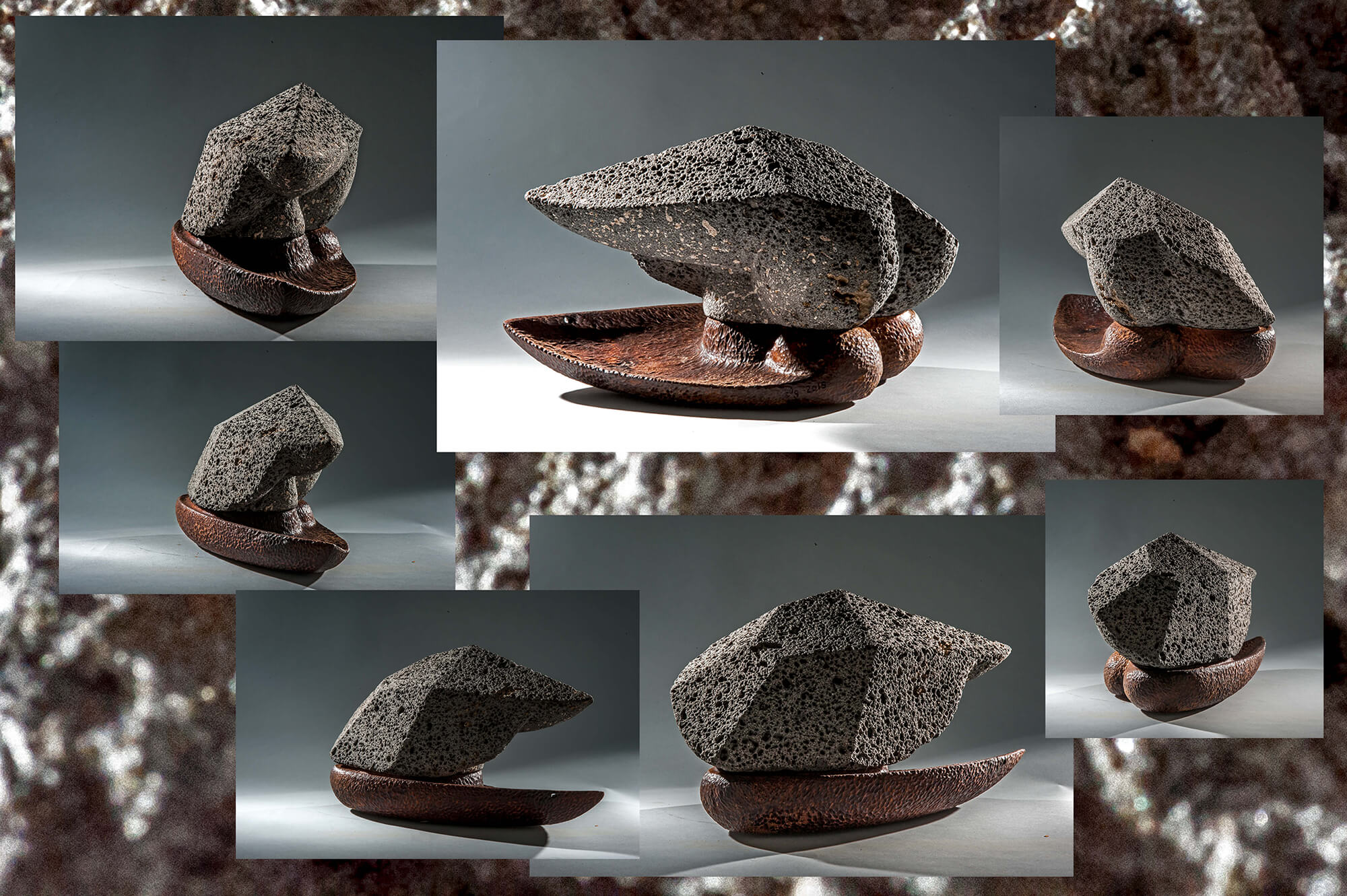Scoria is named after the stone I carved it in – scoria.
As long as I directed light effectively to reveal high places and used my whole body to guide the tool, it was surprisingly easy to carve the planes. As the first plane receded into the stone and grew, I imagined the next and the next, and imagined how they might relate to one another. As the hammer danced in my hands and my body guided it, I imagined planes, edges of planes, and networks of edges, planes, and points. Eventually, I imagined the whole top surface as a sort of carapace, plane by plane by plane, as if protecting a tortoise or armadillo, and I carved it. Then I imagined and carved the underside and was ready to carve the base.
Along the way, I began to see other things in my mind’s eye – – to imagine and to feel them. I imagined movement in static rock, imagined intention, wariness, readiness to action, direction. I imagined real life living in real environments. Scoria explores how simple design elements might evoke those kinds of senses in stone.
What an experience it can be to carve a rock like that!
What challenges and opportunities!
What surprises!
What thrills!
Scoria!
The bottom, boat part of the sculpture came last, as a reflection of the stone it supports. It was almost a shadow of the stone at first but turned into a boat that barely holds it, moving forward. The boat is old growth western red cedar salvaged from an old beam. A small hole in a gunwale is a real knothole, formed as a young growing tree swallowed a much younger tiny branch of itself as it grew, long before the tree matured then died in a logging accident.








